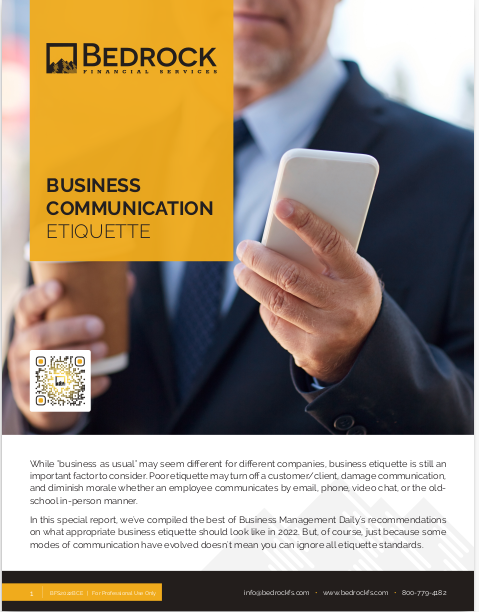Key Takeaways
-
Most marketing plans fail because they are built around assumptions instead of data. A strategy based on outdated or anecdotal understanding can stall progress and create blind spots.
-
The solution lies in creating a dynamic plan centered around measurable goals, audience feedback, continuous testing, and agile iteration based on timely performance metrics.
The Trap Hiding in Plain Sight
You can have the best-looking marketing collateral, beautifully polished scripts, and a consistent ad spend—yet still watch your pipeline stall. Why? Because most marketing plans start from a flawed assumption: that you know what your audience wants before you’ve confirmed it with evidence.
The core issue in 2025 is simple: most plans fail because they aren’t aligned with how real clients make decisions. They’ve become disconnected from human behavior.
Your marketing strategy is not just a to-do list or content calendar. It’s the structural foundation for how you communicate value, build trust, and turn interest into engagement. If it doesn’t reflect the buyer’s journey, your plan is just noise.
You Don’t Have a Marketing Problem—You Have a Relevance Problem
Relevance has surpassed visibility as the most important success factor in marketing. Your clients are bombarded daily with content, offers, pitches, and promotions. The only way to break through in 2025 is to make your message genuinely matter.
Too many professionals create plans in isolation—in a vacuum, based on outdated templates or competitor mimicry. But your clients are real people with unique concerns and evolving expectations.
Here are some key shifts that make relevance harder—but more vital:
-
Prospects expect instant credibility within seconds of seeing your brand.
-
They dismiss anything generic or templated.
-
They perform due diligence before they ever get on a call.
-
Their attention span is short, but their expectations are high.
If your content, tone, and offer don’t speak directly to those realities, you’re invisible.
The Mistake of Planning First, Research Later
One of the most common missteps we see today is starting with a plan and collecting feedback only after it’s rolled out. That approach no longer works. Marketing in 2025 demands an inverted approach: research first, strategy second.
Gather real insights upfront by:
-
Tracking keyword trends specific to your financial niche
-
Reviewing call notes to spot patterns in objections and questions
-
Studying the messaging of top-performing competitors (and identifying the gaps)
-
Conducting short-form surveys with recent clients about why they chose you
This groundwork not only prevents waste—it helps you design a strategy rooted in buyer behavior, not wishful thinking.
The Myth of the One-Size-Fits-All Funnel
Funnels are popular, but dangerous when misused. One of the most persistent myths is that a single, linear funnel can serve all your prospects, regardless of context or complexity.
In financial services, the client journey is rarely linear. There are variables that demand segmentation and personalization:
-
Stages of financial literacy and confidence
-
Age, life goals, and retirement horizons
-
Timeline expectations (immediate vs. long-term planning)
-
Preferred communication styles (self-directed vs. high-touch)
Expecting one funnel to handle that diversity is like expecting one presentation to close every sale. It’s unrealistic and wasteful.
Instead, design funnels by persona or journey phase. Include educational resources, interactive tools, and human engagement at different points depending on the lead’s behavior and needs.
Content Without Context Is a Wasted Effort
Content creation remains one of the top lead-generation methods in 2025—but only when aligned with context. Content alone doesn’t convert. What matters is how, when, and where it lands.
Most common pitfalls include:
-
Producing content without knowing what your audience cares about today
-
Speaking in industry lingo that confuses rather than educates
-
Posting without having a lead-nurture sequence or call-to-action in place
Effective content must:
-
Solve a current and recognized pain point
-
Lead naturally to a next step, whether it’s a checklist, consultation, or webinar
-
Be tracked through performance data so you can double down or pivot fast
Use search trends, client feedback, and open rate data to plan your editorial calendar. You don’t need more content—you need the right content in the right moment.
The Cost of Failing to Test
Letting a marketing plan run untested for months is equivalent to investing client funds with no performance review. It’s irresponsible—and yet extremely common.
Testing should be routine, and here’s what that looks like:
-
Subject lines: A/B test every 2 weeks
-
Ad copy: Rotate angles and track click-through rate monthly
-
Landing pages: Split test layout, call-to-action, and length
-
Email timing: Identify the best day and hour by segment
Testing reveals the difference between assumptions and truths. In 2025, standing still is a form of moving backward. Marketing is no longer static; it should adapt every month, if not every week.
What Your Marketing Plan Actually Needs
Rather than a bulky document that gets dusty on your desktop, you need a working system—lean, responsive, and results-driven.
1. A Clearly Defined Audience (Review Quarterly)
Your audience isn’t fixed. New patterns emerge regularly. Every 90 days, reassess who’s converting and refine your targeting accordingly.
2. Outcome-Based Goals
Don’t say “build brand awareness.” Say “generate 150 qualified leads between June and August.”
3. Multiple Entry Points
Modern prospects take many routes. Some come from organic content, others from referrals, search, or paid ads. Build a structure that meets them wherever they enter.
4. Automated Yet Personal Follow-Up
Trigger email sequences, SMS reminders, or social retargeting in the first 7–14 days after a lead opts in. Layer in personal touchpoints based on behavior.
5. Regular Performance Checkpoints
Create a 30-day review cycle. Use dashboards to track leads, conversions, bounce rates, and engagement. Adjust messaging or offers based on what your audience is showing you.
You’re Not Too Busy to Fix This—You’re Too Busy to Let It Keep Failing
Revisiting your marketing plan doesn’t need to be a burden. In fact, failing to revisit it regularly creates a heavier burden: stagnant growth.
Here’s a practical cadence:
-
Once a month, block 90 uninterrupted minutes
-
Review lead flow, engagement trends, and conversions
-
Make one significant change (headline, offer, sequence)
-
Document what you tested and why
You don’t need a complete overhaul every time—you just need one clear improvement. Over time, that momentum compounds.
Let Your Clients Write Your Copy
The strongest copy isn’t clever. It’s accurate. It mirrors your client’s language, fears, goals, and emotional triggers.
Mining sources like:
-
Discovery call recordings
-
Onboarding questionnaire responses
-
Five-star reviews and testimonials
-
Survey feedback about pain points and hesitations
When you use client language, your messaging stops feeling like marketing and starts feeling like clarity. Swap “optimize your portfolio risk” with “I don’t want to lose what I’ve worked so hard to save.”
What to Do Instead of Writing a New Plan
You don’t need another plan. You need clarity.
Start here:
-
What’s already working? Identify which channels, content types, and offers are yielding conversions. Do more of that.
-
Where are leads dropping off? Examine your lead-to-appointment and appointment-to-close metrics. Is there a consistent break in the funnel?
-
Which beliefs are untested? Replace every guess with measurable data. Is your audience really active on that platform? Is that CTA resonating?
This exercise alone can reduce wasted hours and redirect your energy toward proven results.
How to Keep Your Plan Alive
A successful plan is never “done.” It’s a breathing system you review, adjust, and evolve. Here’s how:
-
Quarterly Rebuilds: Reassess goals, messages, and client profiles.
-
Monthly Dashboards: Track metrics that matter—cost per lead, appointment set rate, client acquisition cost.
-
Weekly Tweaks: Change timing, subject lines, or ad headlines based on last week’s data.
-
Daily Insights: Watch for micro-feedback: reply rates, unsubscribes, and silent drop-offs.
Marketing isn’t about perfection. It’s about consistent forward movement.
Reframe Your Marketing Strategy Into a System That Grows With You
If your marketing plan feels like a constant uphill battle, that’s a signal it wasn’t built to support your current goals. The answer isn’t more effort—it’s more alignment.
At Bedrock Financial Services, we specialize in helping professionals like you create marketing systems that adapt, automate, and accelerate growth. Whether you need lead nurturing workflows, automation tools, or just a better process for staying consistent, we can help.
When you’re ready to drop the guesswork and operate from clarity, sign up with us. We’re here to build your momentum.







